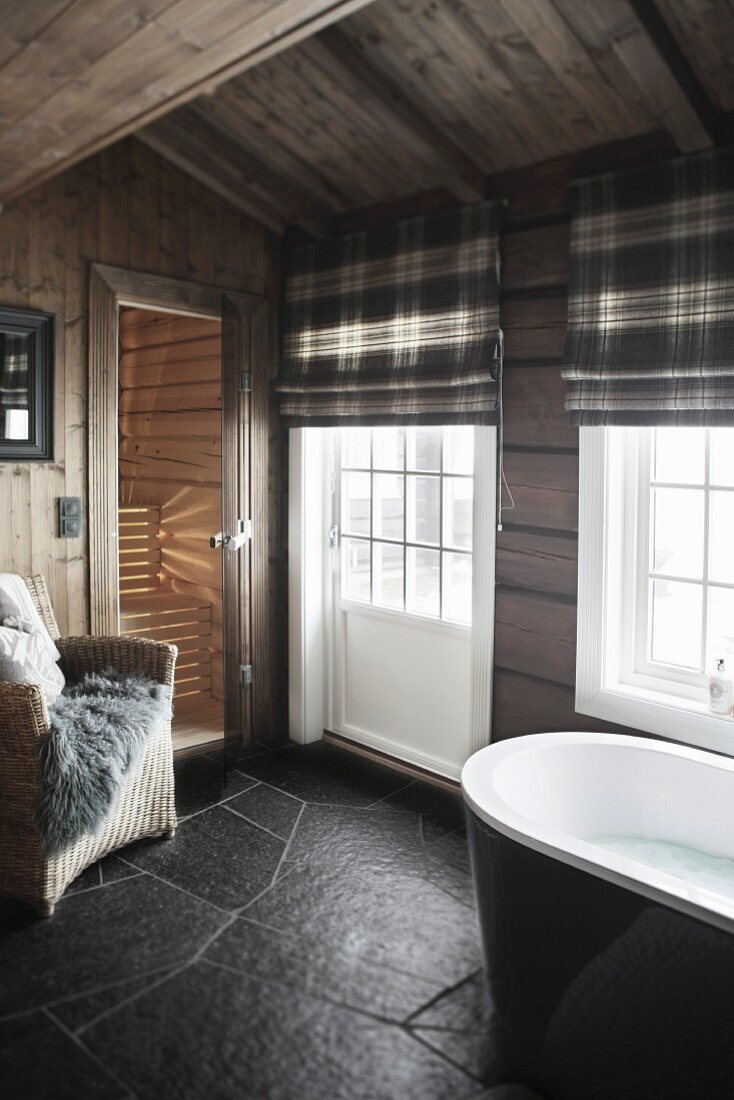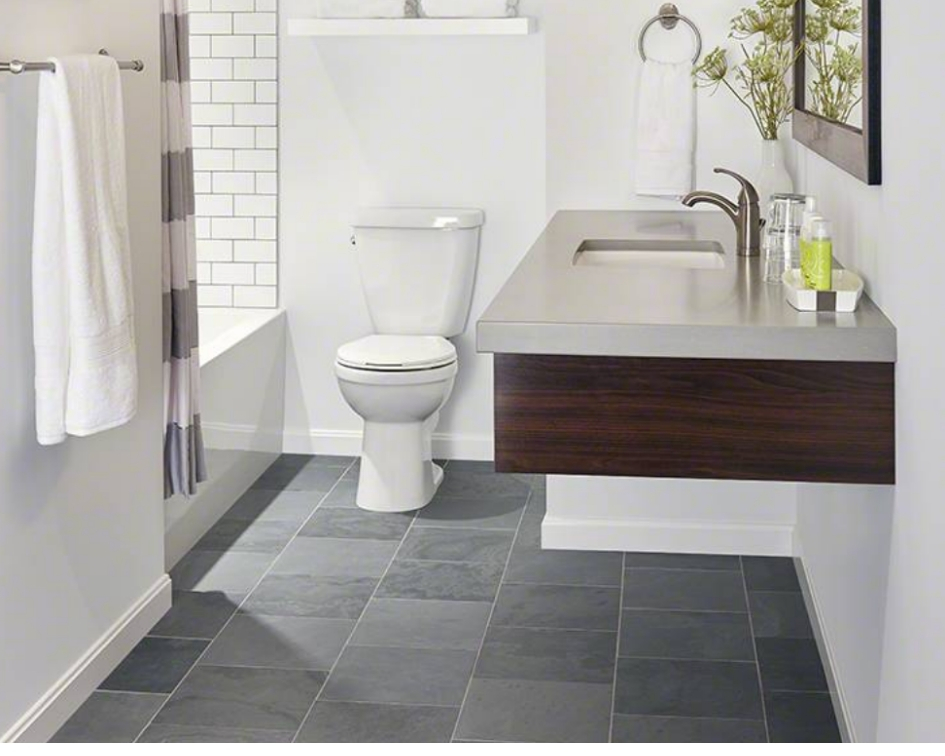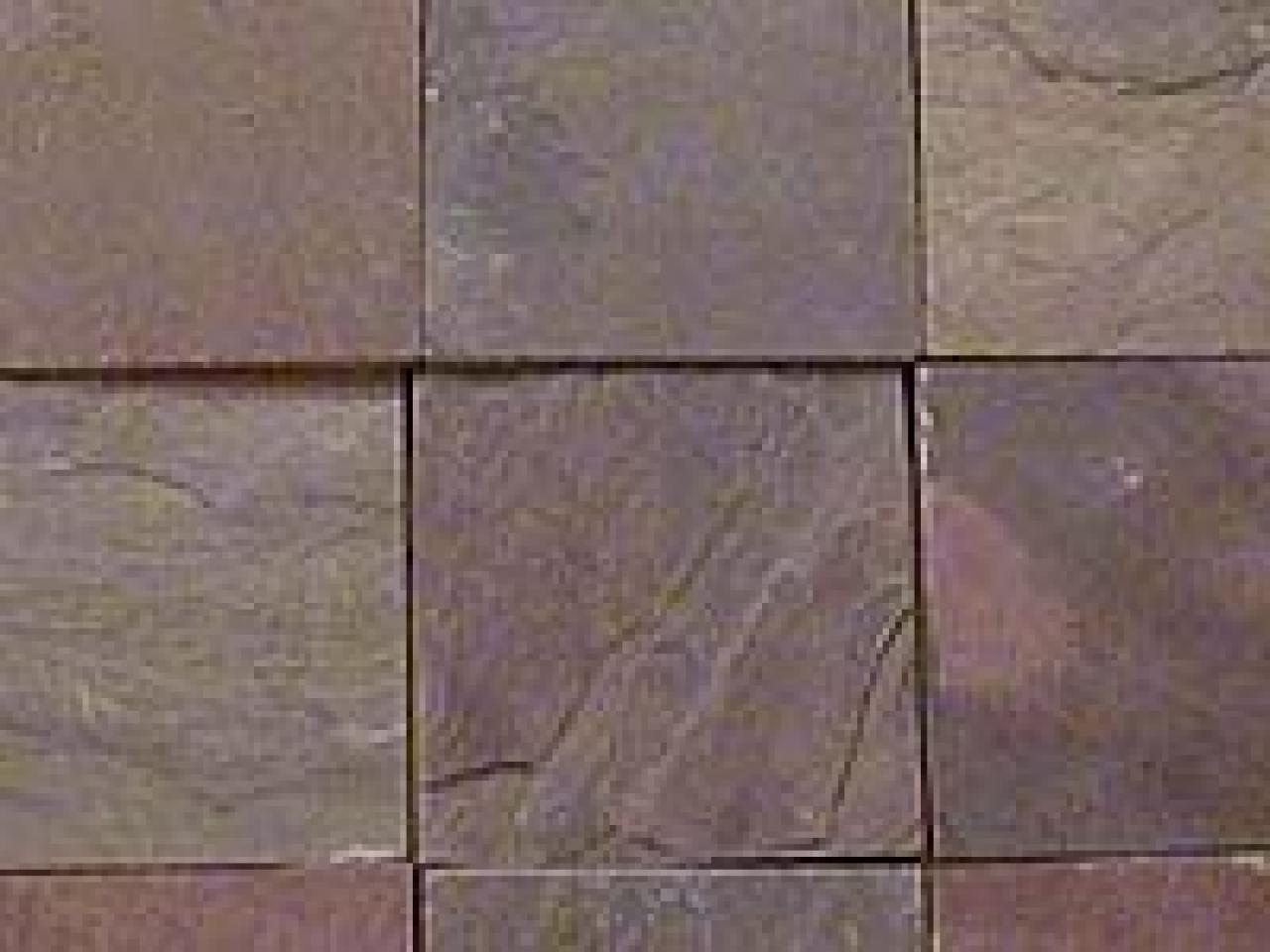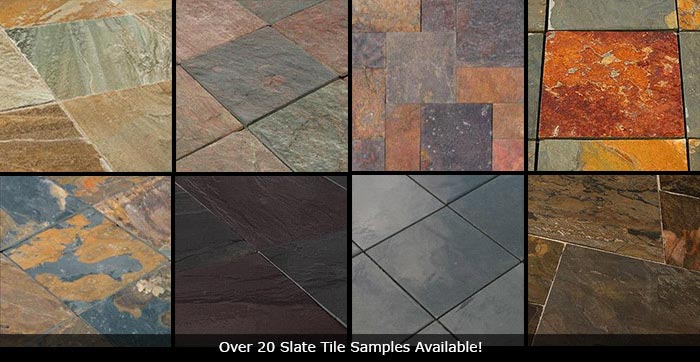Slate bathroom tiles are a popular choice for homeowners seeking a natural and rustic aesthetic in their bathrooms. Like any material, slate comes with its own set of pros and cons that should be carefully considered before making a decision. One of the primary advantages of slate bathroom tiles is their natural beauty and unique appearance. Slate is a metamorphic rock that features distinctive color variations, textures, and patterns, giving bathrooms a one-of-a-kind look that adds character and charm to the space.
Another advantage of slate bathroom tiles is their durability and longevity. Slate is a highly durable material that can withstand heavy foot traffic, moisture, and temperature fluctuations, making it an ideal choice for bathrooms where moisture and humidity levels are higher. Additionally, slate is resistant to stains, scratches, and chips, ensuring that bathroom floors and walls maintain their appearance even with regular use.
On the downside, one of the main drawbacks of slate bathroom tiles is their relatively high cost compared to other tile options. Slate is a natural stone that requires careful extraction, processing, and installation, which can contribute to its higher price point. Homeowners should consider their budget and weigh the cost of slate tiles against other materials to determine if it fits within their financial constraints.
Another potential drawback of slate bathroom tiles is their susceptibility to staining and water absorption if not properly sealed and maintained. Like any natural stone, slate is porous and can absorb water and liquids if left unprotected, leading to stains, discoloration, and potential damage over time. To mitigate this risk, homeowners should ensure that slate tiles are properly sealed upon installation and resealed periodically to maintain their integrity and appearance.
Furthermore, while slate bathroom tiles offer a unique and natural aesthetic, they may not be suitable for all design styles and preferences. Some homeowners may prefer the uniformity and consistency of ceramic or porcelain tiles over the varied and organic look of slate. Additionally, slate’s rough texture may not be as comfortable underfoot as smoother tile options, which could be a consideration for households with young children or elderly individuals.
Slate bathroom tiles offer a range of advantages including natural beauty, durability, and resistance to stains and scratches. However, they also come with drawbacks such as higher cost, susceptibility to staining if not properly sealed, and a textured surface that may not be suitable for all design preferences. Homeowners should carefully weigh the pros and cons of slate tiles and consider their budget, maintenance preferences, and aesthetic preferences before making a decision.
The Pros and Cons of Slate Tile Flooring Floor Coverings
The Pros and Cons of Slate Tile DIY
Get the Iconic Look of Slate in Porcelain Tile
Slate Bathroom Tile Benefits, Bathroom Slate Tiles, Bathroom Slate
Slate Tile vs. Travertine vs. Porcelain: Flooring Tiles Comparison
Related articles:
- Bathroom Tile Atlanta
- Black And White Basketweave Bathroom Tile
- Popular Bathroom Tile Colors
- Grey And White Bathroom Tile Designs
- White And Cream Bathroom Tiles
- Bathroom Tile Demolition
- Replace Bathroom Tile Grout
- Porcelain Bathroom Tile Ideas
- Bathroom Tiles In Grey
- Can You Paint Bathroom Tile In The Shower
Slate Bathroom Tile Pros And Cons
Are you considering using slate bathroom tile in your home? Slate is a popular material for bathroom tiling, but there are both pros and cons to consider before making your decision. In this article, we will discuss the advantages and disadvantages of slate bathroom tile so you can decide if it’s the right choice for your home.
Benefits of Slate Bathroom Tile
One of the major benefits of using slate bathroom tile is its durability. Slate is a natural stone that is incredibly strong and resilient. It’s highly resistant to moisture, which makes it an ideal choice for bathrooms as it won’t be damaged by frequent exposure to water. Additionally, it’s also very easy to clean, as it doesn’t absorb dirt and grime like other materials do.
Another benefit of choosing slate tile is its aesthetic appeal. Slate comes in a wide variety of colors and patterns, so you can easily find a tile that complements the existing decor in your bathroom. Its natural textures also add a unique elegance to any space, making it an attractive option for homeowners looking to update their bathrooms.
Finally, slate is an affordable option when compared to other types of tile. It’s relatively inexpensive when compared to ceramic or porcelain tiles, so it’s a great choice for those on a budget who still want a high-quality tile option.
Disadvantages of Slate Bathroom Tile
Despite its many advantages, there are some drawbacks to using slate bathroom tile that should be considered before making your decision. First and foremost, slate is porous and can easily stain if not sealed properly. This means that regular maintenance is essential if you want to keep your tile looking new. Additionally, it can also be slippery when wet, so be sure to use non-slip mats or rugs in areas where there may be standing water.
In addition, slate can be difficult to install due to its weight and thickness. It requires specialized tools and techniques that may need to be done by a professional installer, which can add costs to your project. Finally, since slate is a natural stone, no two pieces are the same and the color can vary from piece to piece, which can make it difficult to match tiles across different batches.
Is slate bathroom tile expensive?
While not as cheap as ceramic or porcelain tiles, slate is generally more affordable than other natural stone tiles such as marble or granite. Prices will vary depending on the type of slate being used and the size of the tiles being installed.
Is slate bathroom tile difficult to maintain?
While regular cleaning and maintenance is necessary for any type of tile, slate does require extra care due to its porous nature. Slates must be regularly sealed in order to protect them from staining, and any spills should be cleaned up immediately in order to avoid permanent damage.
Can I install slate bathroom tile myself?
Installing slate bathroom tile can be difficult due to its weight and thickness; therefore it’s best left in the hands of experienced professionals who have access to the right tools and techniques needed for successful installation.
When choosing bathroom tile for your home, it’s important to weigh all the pros and cons before making your final decision. Slate bathroom tile offers many benefits such as durability, aesthetic appeal, ease of cleaning and affordability; however there are some drawbacks such as staining potentials and difficulty in installation that must also be taken into consideration before making your purchase. With proper maintenance and installation techniques however, you can enjoy beautiful long-lasting results with your new slate bathroom tile!
What type of grout should be used with slate bathroom tile?
A latex-modified thinset or a sanded grout should be used with slate bathroom tile. This type of grout is designed to be strong and flexible to accommodate the movement of the tile over time. It will also provide a better bond between the slate and the mortar bed, helping to prevent cracking and chipping.
What type of sealer should be used with slate bathroom tile?
Sealers specifically designed for natural stone are recommended for sealing slate bathroom tile. Such sealers typically contain siloxane, a compound that penetrates into the stone, protecting it from water and staining. The sealer should be applied according to the manufacturer’s instructions.
What sealer should I use to protect slate bathroom tile from water damage?
For slate bathroom tiles, a penetrating sealer is the best choice. Penetrating sealers penetrate deep into the pores of the stone and form an invisible barrier that prevents water from damaging the tile. Additionally, these sealers help to repel dirt and staining, making them a great choice for bathrooms.






